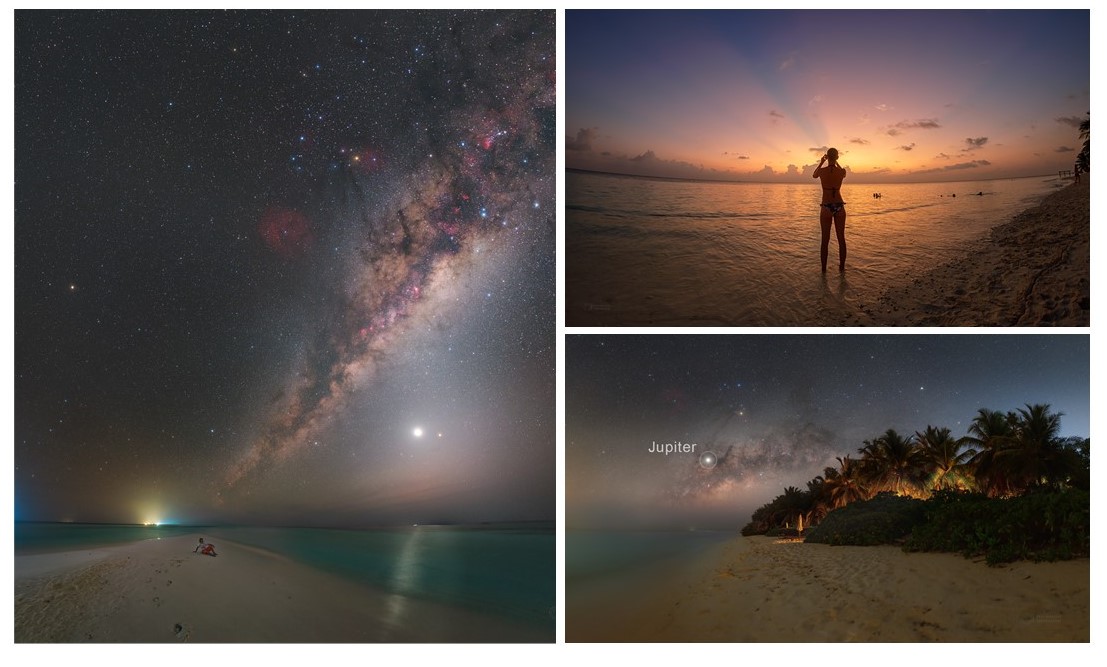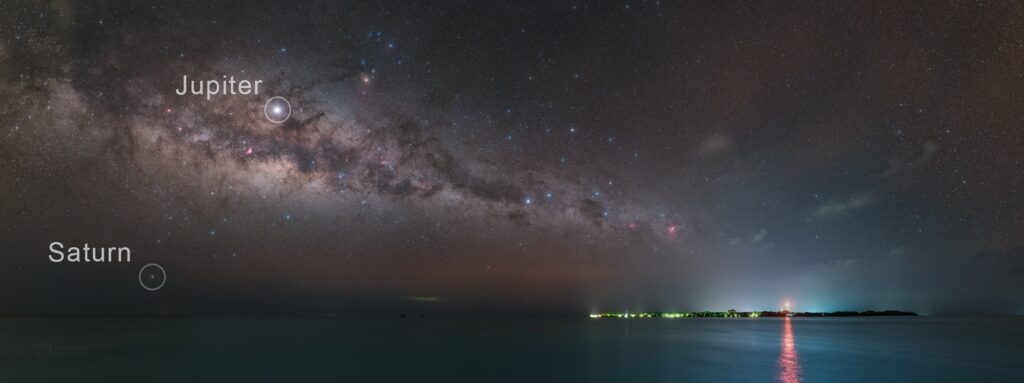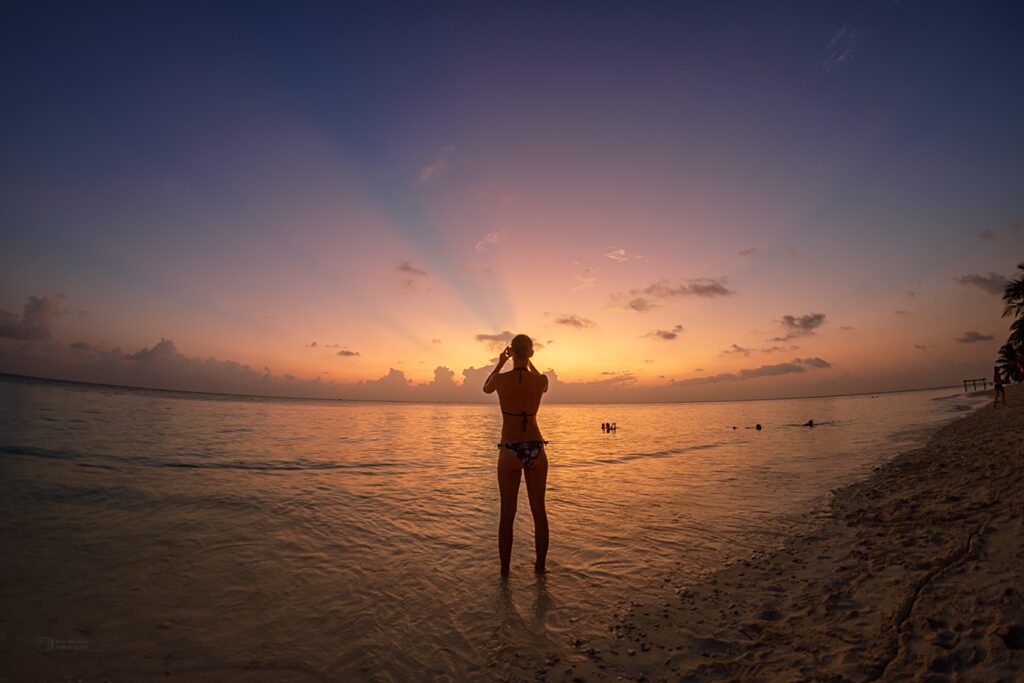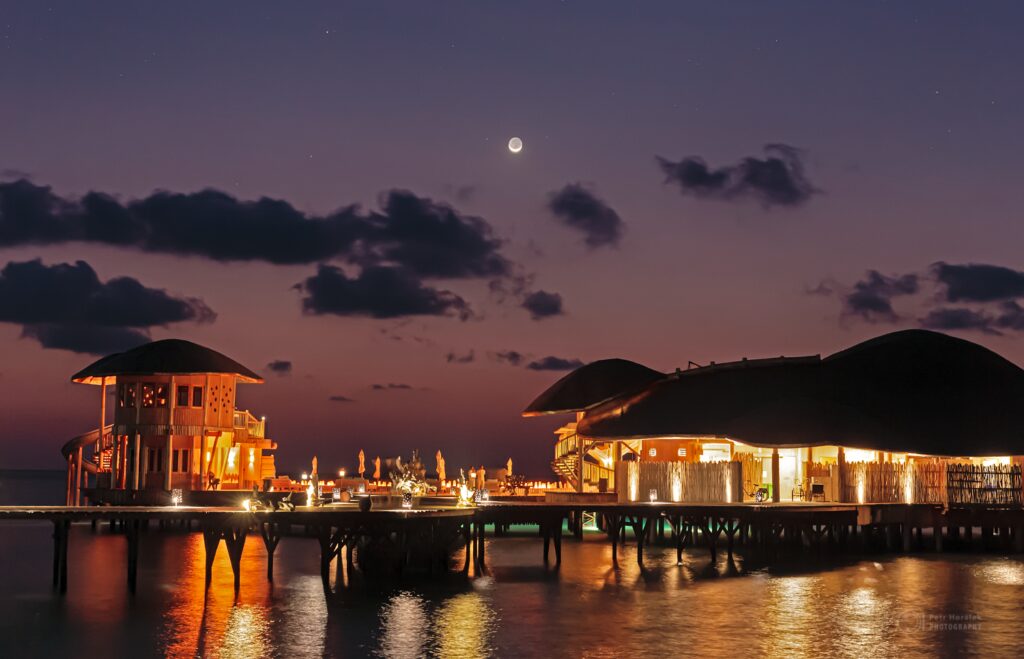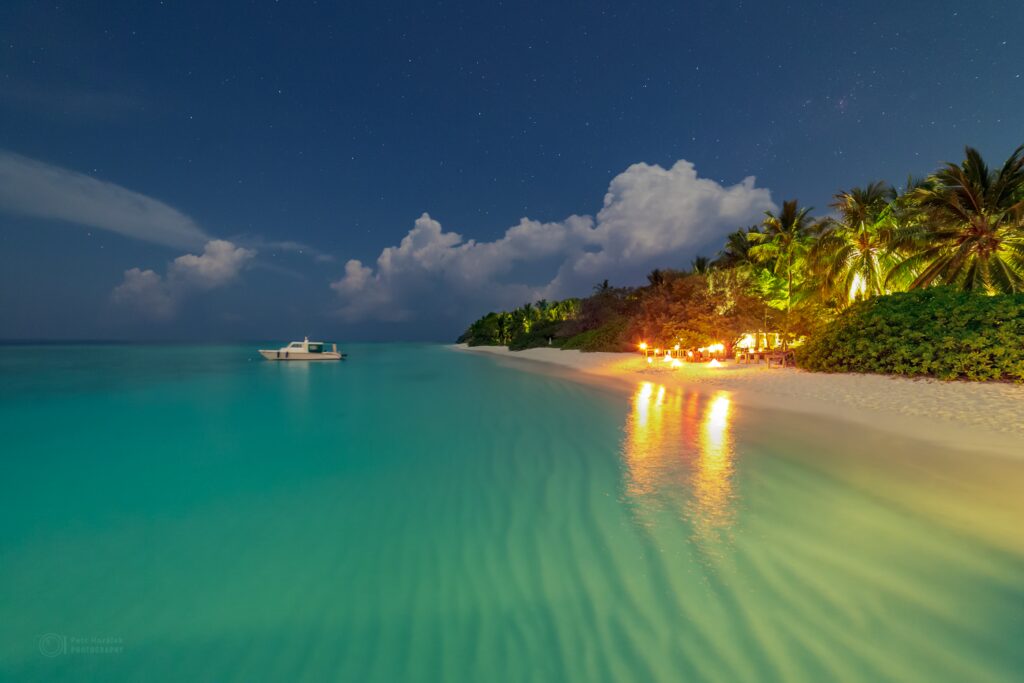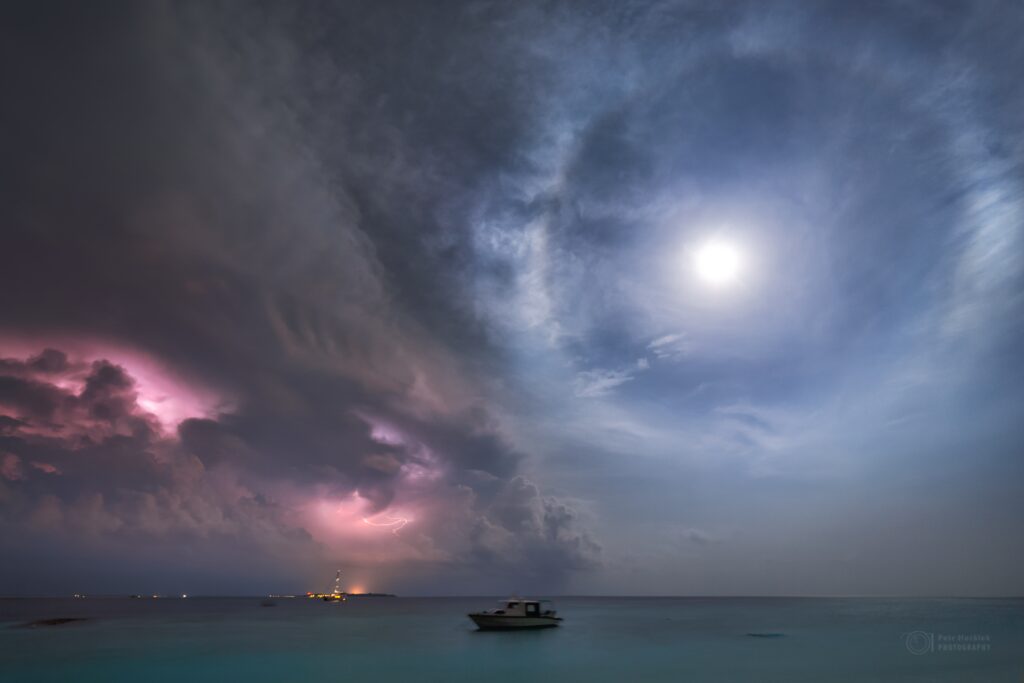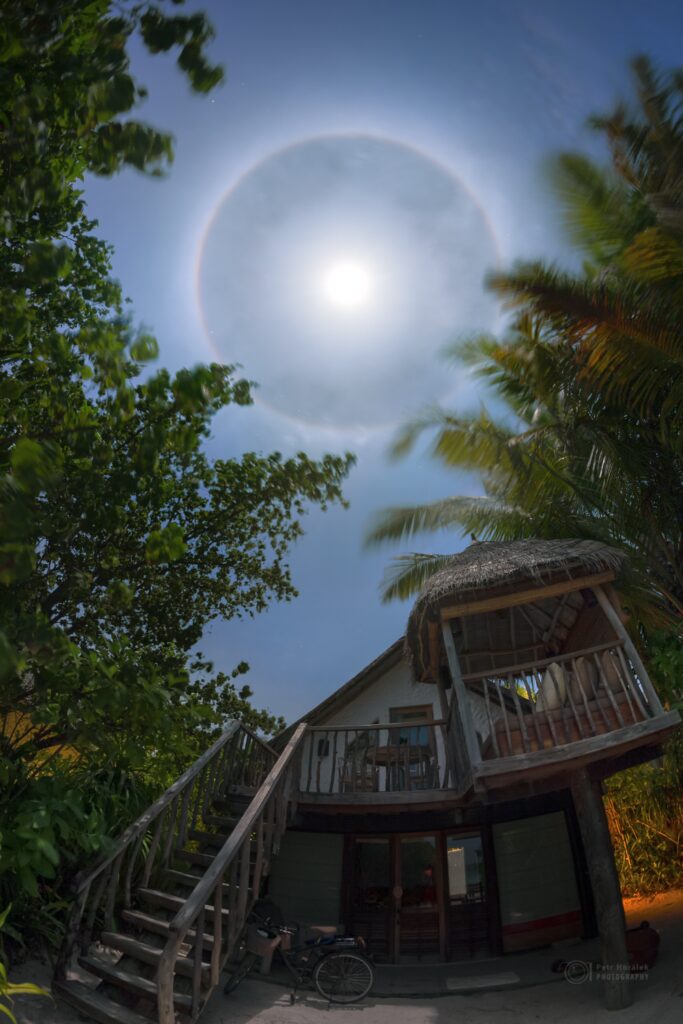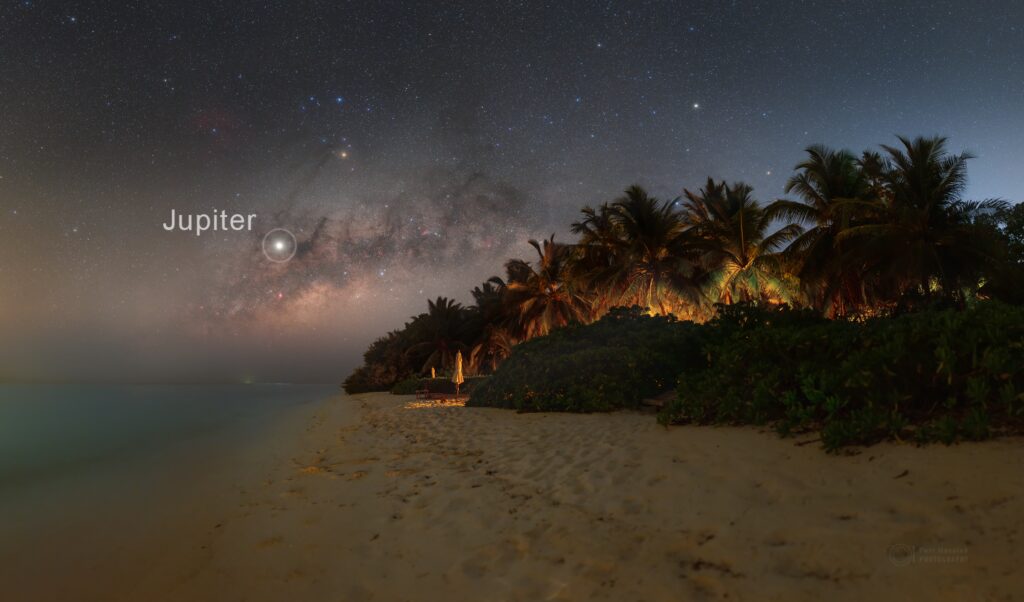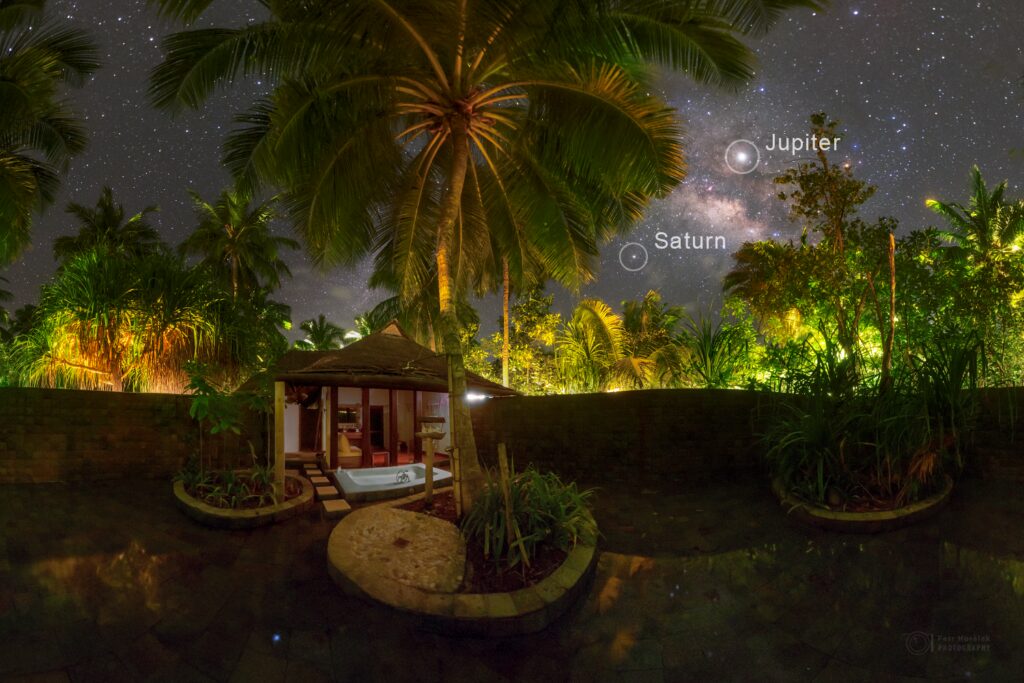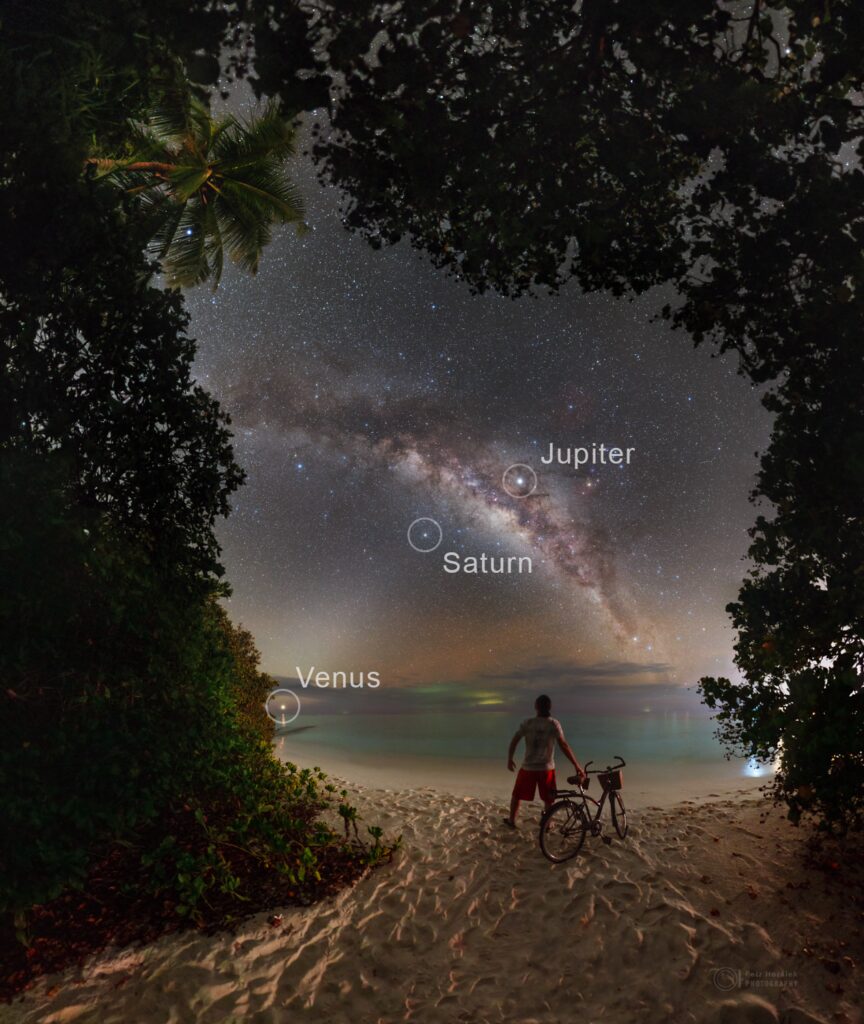Let’s start with the Moon. As is well known, our cosmic neighbor orbits the Earth in approximately 27 days, during which time it changes its phases from the first quarter to the full Moon and the last quarter to the new Moon. Because the Earth moves around the Sun at the same time as the Moon, the Moon itself will be among the same stars 2 days later, in 29 days after. And that time its phase looks a little different. In addition, thanks to the tilt of the Earth’s axis of rotation, our Moon is also projected at a different angle to the horizon, and therefore it looks as if our neighbor is walking across the sky completely unpredictably. This is not the case: Even the movement of the Moon in the sky has its own schedule, and the ones who know can look out for beautiful celestial shows.
Although many people admire the full Moon the most, the Moon is truly most beautiful when we see it in a narrow crescent setting after dusk or rising before dawn over the Indian Ocean. It is precisely the changes in the colors and darkness of the sky with the Moon, which reveals even its part not directly illuminated by the Sun thanks to the so-called “Earthshine”. When it is dark, that is a captivating spectacle. Because the Maldives islands are located close to the equator, the crescent Moon can tilt beautifully and set (or rise) practically perpendicular to the horizon, which is not quite common elsewhere in the world. Occasionally, the Moon can even appear in the sky directly against the deep crimson twilight caused by volcanic ash high in the atmosphere, as was the case in 2022 following the eruption of the Hunga Tonga–Hunga Ha’apai volcano.
In the days around the full Moon, the moonlight is so strong that faint objects cannot be seen. But the Moon itself can conjure up miracles: its light illuminates the sandy bottom of the lagoons of any Maldivian island and the life in it. And if there are thin clouds in the sky, we can observe colorful halo phenomena around our companion, lasting even several hours.
What about the planets? Can we see some in the Maldives? Absolutely yes! The orbits of all the planets of the Solar System are spread out more-less in one plane, so we look at the planets in a specific belt in the Earth’s sky. That belt is called the ecliptic and it is projected onto the zodiacal constellations (the ones we well know from doubtful astrology as “signs”). And because the Earth’s axis is tilted from the plane of the ecliptic by about 23.5 degrees, in the Maldivian sky the belt of the ecliptic is projected very high overhead. And thanks to that, the planets too. So, the planets are visible so well from Maldives! You just must know when and where to find which planet in the sky, because the planets also move around the Sun and change their position significantly on the order of a few days–depending on how close they orbit the Sun.
The hardest to observe is Mercury, which orbits the Sun in just 88 days. Moreover, it is also close to the Sun in the sky. Thanks to this, we can observe it only briefly, either in the evening sky at dusk or in the morning sky at dawn. It is very fleeting, and we only see it a few days in a row in the evening and then again, a few dozen days later, another few days in the morning. And so, on and on. Because it reaches the brightness of the brightest stars in the sky, we can see it with the naked eye—if we know where.
The completely opposite case is Venus. It orbits the Sun once every 225 days, and combined with the Earth’s movement around the Sun, we can see the glittering Venus as a bright gem (the brightest object after the Sun and the Moon) for about half a year in the evening sky (like an “evening star”) and then again in the morning sky (like a “morning star”). Venus is even so bright that in a completely dark place–far from sources of light pollution–we can see our own shadow cast by the light from Venus!
Mars can also be very bright. It orbits the Sun once every 687 days, so we always must wait approximately two years and one month until it is best observable–at the antisolar point. During these so-called oppositions with the Sun, it is truly noticeable, it has an orange color and several months around its opposition cannot be overlooked. When exactly will such opposition occur? December 1, 2022; January 16, 2025; February 19, 2027; March 25, 2029… Mars will be closest and brightest until September 15, 2035. But even until then–even a few months around the mentioned dates, it will be worth watching!
And the last two planets visible in the Maldivian sky with the naked eye are the planetary giants Jupiter and Saturn. While Jupiter orbits the Sun once every 12 years, it takes Saturn 30 years. Jupiter, in particular, is always a majestic object, as it is the brightest after the Sun, Moon and Venus. And all the time that it is observable. Jupiter does not change its position as significantly as Mars or Venus, so during a year we can find it mostly in the same constellation. At the same time, it is also best visible around the period of its opposition with the Sun, which occurs approximately one month later every other year. In 2023 it will be in November, in 2024 in December, in 2026 in January… Saturn is fainter compared to Jupiter because it is significantly further from us (over 1 billion kilometers when it is closest to Earth), but still, we can find with our eyes. Its full beauty–distinctive rings–can be revealed only with a small telescope.
How do you recognize the planets in the sky? First, they are usually the brightest objects in the sky. Sometimes the Moon, whose orbit is in a similar direction, also passes by them. Second, the planets do not twinkle in the sky. The twinkling of stars is caused by the optical imperfection of our atmosphere, and the narrow beam of rays coming from the stars easily breaks or deflects our atmosphere. Therefore, the light from them travels intermittently to our eyes. But planets are objects with a larger angular size, which makes their light pass more smoothly through the atmosphere. Thirdly, we always find planets along the ecliptic, only in zodiacal constellations. This is also why they sometimes appear even close to each other, showing a beautiful conjunction. Those planetary “meetings” occur even several times per year, and it is such beautiful to gaze some of them in the Maldivian sky. And if you want not to miss any and to ensure the identification of the planets in the sky, get a simple application. One of the most popular is Stellarium – you can download it at www.stellarium.org.
Of what was mentioned before, the planets and the Moon are very well observable from Maldives with their location by the equator. And if you want to fully enjoy the planets in front of the beauty of the Milky Way or the Zodiacal Light, you need to find a place far from sources of light pollution, caused by i.e. halogen lamps, glowing ships and illuminated resorts, ports or cities. The best view is on a beach in the shade of any artificial lights. Unfortunately, not all Maldivian islands are doing so well, on many of them they use light where it is not needed (lights shine with great intensity up into the sky, bright ball lights are often used instead of directional lights that would only shine down to the ground). One of the islands where you can still see the beauty of the night sky is, for example, Thoddoo, especially its southeastern part. If the Maldivian government and the owners of the accommodation centers would come up with a plan to effectively reduce light pollution by installing the right and nature-friendly lamps (which is very well described by International Dark Sky Association), it would also become a truly worldly unique paradise for enjoying the gems of the night sky!
Something about the author and photographer of this post
PETR HORÁLEK was born in 1986 in Pardubice, Czech Republic. He studied Theoretical Physics and Astrophysics at Masaryk University Brno (graduated in 2011) and Theoretical Physics in Silesian University of Opava (graduated in 2022). He worked briefly as an observer of fireballs at the Department for Interplanetary Matter of the Astronomical Institute of Academy of Sciences of Czech Republic, now he is astrophotographer and popularizer of astronomy, awarded also by NASA. From 2011, he fell in love with astrophotography and decided to take a year-long trip around the world to improve his skills in that field. As citizen of a light-polluted Czech Republic, he travels the world for naturally dark places in show people in polluted cities what are they missing (not only) above their heads. A long route through the Canary Islands, Australia, New Zealand, the Cook Islands and South Africa brought him in the end into the heart of the Atacama Desert at ESO’s La Silla and Paranal Observatory in 2015 (when he became the ESO Photo Ambassador), later in NOIRLab observatories (as NOIRLab Photo Envoy) and, of course, the Maldivian Islands in 2019. Petr specialises in photographing rare night-sky phenomena. His images capture unique moments, which he calls “pearls of astronomy”, that add to the immeasurable beauty of a dark starry sky. Something, he thinks that everyone should see at some point in their lives.
See more photos by Petr Horalek on his websites:
